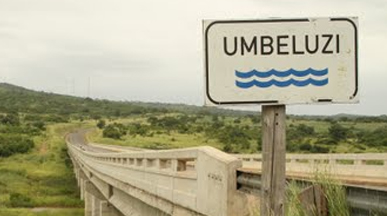Mozambique: Maritime Management Plan is crucial for socioeconomic sustainability
Water level in Umbeluzi river remains critically low – AIM report

The level of the reservoir at the Pequenos Libombos dam on the Umbeluzi river in Maputo province remains crucially low, threatening the supply of water to Maputo and Matola cities.
While there have been encouraging rains in the Limpopo river basin, in Gaza province, the same is not true of the Umbeluzi and Incomati river basins further south.
The latest national hydrological bulletin, issued on Thursday by the National Directorate of Water Resources, says that the Pequenos Libombos reservoir is just 14 per cent full. The dam was discharging water at a rate of slightly more than three cubic metres a second.
But on Wednesday only 0.69 cubic metres a second entered the reservoir from upstream, and on Thursday no water at all entered.
Clearly if no water is entering the reservoir it cannot continue discharging three cubic metres a second for very long. The government has already banned the use of Pequenos Libombos water for irrigated agriculture, and this is threatening production at the banana plantations and other commercial agricultural enterprises in the Umbeluzi Valley.
The top priority is to ensure enough water for the Umbeluzi pumping and treatment station which is the main source of drinking water for Maputo and Matola. The Umbeluzi rises in Swaziland, and safeguarding the water supply for the Greater Maputo conurbation depends on heavy rains in Swaziland in the near future.
Aware of an impending water supply crisis, the southern regional water board (ARA-Sul) has been broadcasting regular television warnings. These show the depleted levels of both the Umbeluzi and the Incomati rivers, and declare “Water is a limited resource and must be used rationally”.
ARA-Sul urges consumers to restrict their use of water. While the current shortage lasts, they should not wash cars or water lawns, and should not leave the taps running while they brush their teeth.
The reservoir at the Corumana dam, on the Sabie river, the main tributary of the Incomati, is even lower than the Pequenos Libombos. It is less than 12 per cent full, and on Thursday was not discharging any water at all.
Elsewhere in the country, the rivers and dams seems to be recovering from the 2016 drought, caused by the El Nino weather phenomenon.
Rains in the Limpopo basin raised the river to flood alert level at Combomune, on its upper reaches on Wednesday. That surge of water is now heading downstream towards Chokwe, at the heart of Limpopo irrigated agriculture, and ARA-Sul has warned farmers to move their equipment to higher ground, lest it be submerged.
There is also some risk of flooding on the Pungoe river in the central province of Sofala. At midday on Thursday the river was measured at 6.56 metres at the Pungoe Sul hydrometric station – which is slightly above the alert level of 6.5 metres.













Leave a Reply
Be the First to Comment!
You must be logged in to post a comment.
You must be logged in to post a comment.